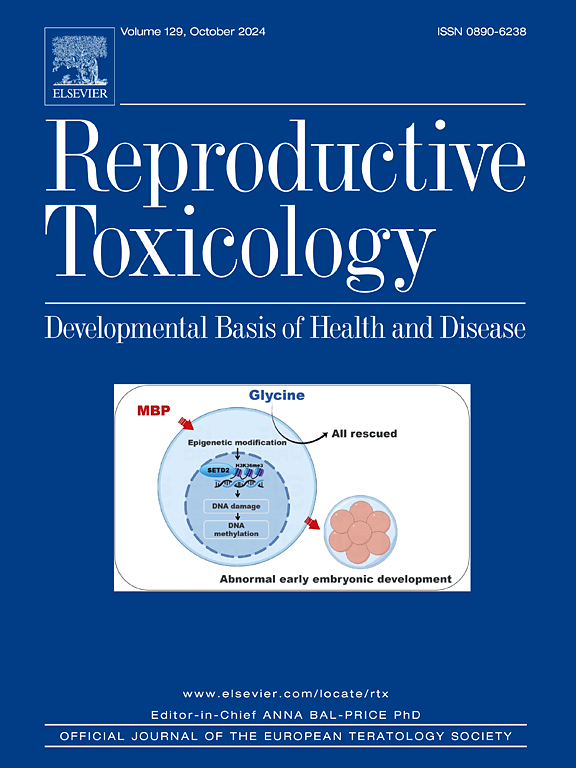Effects of cannabidiol, cannabichromene, cannabidivarin, cannabigerol and cannabinol in endometrial cells: Implications for endocrine and senescence modulation
IF 2.8
4区 医学
Q2 REPRODUCTIVE BIOLOGY
引用次数: 0
Abstract
Throughout a woman’s menstrual cycle, endometrial stromal cells (ESCs) undergo cyclic morphological and functional alterations, involving proliferation, differentiation and senescence, modulated in part by steroid hormones and the endocannabinoid system. Disruptions in these processes can lead to endometrial conditions, like endometriosis or miscarriage. In this work, we examined the impact of the phytocannabinoids cannabidiol (CBD), cannabichromene (CBC), cannabidivarin (CBDV), cannabigerol (CBG) and cannabinol (CBN) at 2 µM, by using the St-T1b cell line, a representative model of ESCs. CBDV, CBD and CBN increased ESR1 transcription, while it was decreased by CBG. Estrogen receptor α (ER) protein was reduced by CBG and CBN. ER activation, assessed via TFF1 expression, was promoted by all cannabinoids except CBN, which suppressed it. Progesterone receptor gene expression increased for CBC, CBDV and CBG treatments, decreasing for CBN. Furthermore, androgen receptor (AR) transcription was upregulated by CBC and CBN, with protein levels increased only by CBN. All the cannabinoids inhibited AR activation. CBN enhanced AKT and ERK1/2 phosphorylation and upregulated AREG expression. Senescence-associated markers YPEL3 and LMNB1 were modulated by CBC, CBD, and CBN, accompanied by increased β-galactosidase accumulation. Additionally, CBC and CBD upregulated NAPE-PLD mRNA levels, the anandamide synthesis enzyme, although CBC and CBN reduced its protein expression. CBDV increased gene and protein expression of FAAH, the anandamide degrading enzyme. These results suggest that phytocannabinoids may disrupt the interplay between the endometrial endocrine signaling and the endocannabinoid system, as well as modulate senescence in ESCs, potentially affecting female fertility.
大麻二酚、大麻二色胺、大麻二酚、大麻二酚和大麻二酚在子宫内膜细胞中的作用:对内分泌和衰老调节的影响
在整个女性月经周期中,子宫内膜基质细胞(ESCs)经历了周期性的形态和功能改变,包括增殖、分化和衰老,部分受类固醇激素和内源性大麻素系统的调节。这些过程的中断会导致子宫内膜疾病,如子宫内膜异位症或流产。在这项工作中,我们利用ESCs的代表性模型St-T1b细胞系,研究了植物大麻素大麻二酚(CBD)、大麻二酚(CBC)、大麻二酚(CBDV)、大麻二酚(CBG)和大麻酚(CBN)在2 µM下的影响。CBDV、CBD和CBN增加了ESR1的转录,而CBG降低了ESR1的转录。CBG和CBN使雌激素受体α (ER)蛋白含量降低。通过TFF1表达评估,除CBN抑制外,所有大麻素都促进了ER的激活。孕激素受体基因表达在CBC、CBDV和CBG组均升高,而在CBN组则降低。此外,CBC和CBN上调雄激素受体(AR)的转录,只有CBN上调了雄激素受体(AR)的蛋白水平。所有大麻素都抑制AR激活。CBN增强AKT和ERK1/2磷酸化,上调AREG表达。衰老相关标志物YPEL3和LMNB1被CBC、CBD和CBN调节,并伴有β-半乳糖苷酶积累的增加。此外,CBC和CBD上调了anandamide合成酶NAPE-PLD mRNA水平,尽管CBC和CBN降低了其蛋白表达。CBDV增加了大麻酰胺降解酶FAAH基因和蛋白的表达。这些结果表明,植物大麻素可能会破坏子宫内膜内分泌信号和内源性大麻素系统之间的相互作用,并调节ESCs的衰老,从而潜在地影响女性的生育能力。
本文章由计算机程序翻译,如有差异,请以英文原文为准。
求助全文
约1分钟内获得全文
求助全文
来源期刊

Reproductive toxicology
生物-毒理学
CiteScore
6.50
自引率
3.00%
发文量
131
审稿时长
45 days
期刊介绍:
Drawing from a large number of disciplines, Reproductive Toxicology publishes timely, original research on the influence of chemical and physical agents on reproduction. Written by and for obstetricians, pediatricians, embryologists, teratologists, geneticists, toxicologists, andrologists, and others interested in detecting potential reproductive hazards, the journal is a forum for communication among researchers and practitioners. Articles focus on the application of in vitro, animal and clinical research to the practice of clinical medicine.
All aspects of reproduction are within the scope of Reproductive Toxicology, including the formation and maturation of male and female gametes, sexual function, the events surrounding the fusion of gametes and the development of the fertilized ovum, nourishment and transport of the conceptus within the genital tract, implantation, embryogenesis, intrauterine growth, placentation and placental function, parturition, lactation and neonatal survival. Adverse reproductive effects in males will be considered as significant as adverse effects occurring in females. To provide a balanced presentation of approaches, equal emphasis will be given to clinical and animal or in vitro work. Typical end points that will be studied by contributors include infertility, sexual dysfunction, spontaneous abortion, malformations, abnormal histogenesis, stillbirth, intrauterine growth retardation, prematurity, behavioral abnormalities, and perinatal mortality.
 求助内容:
求助内容: 应助结果提醒方式:
应助结果提醒方式:


